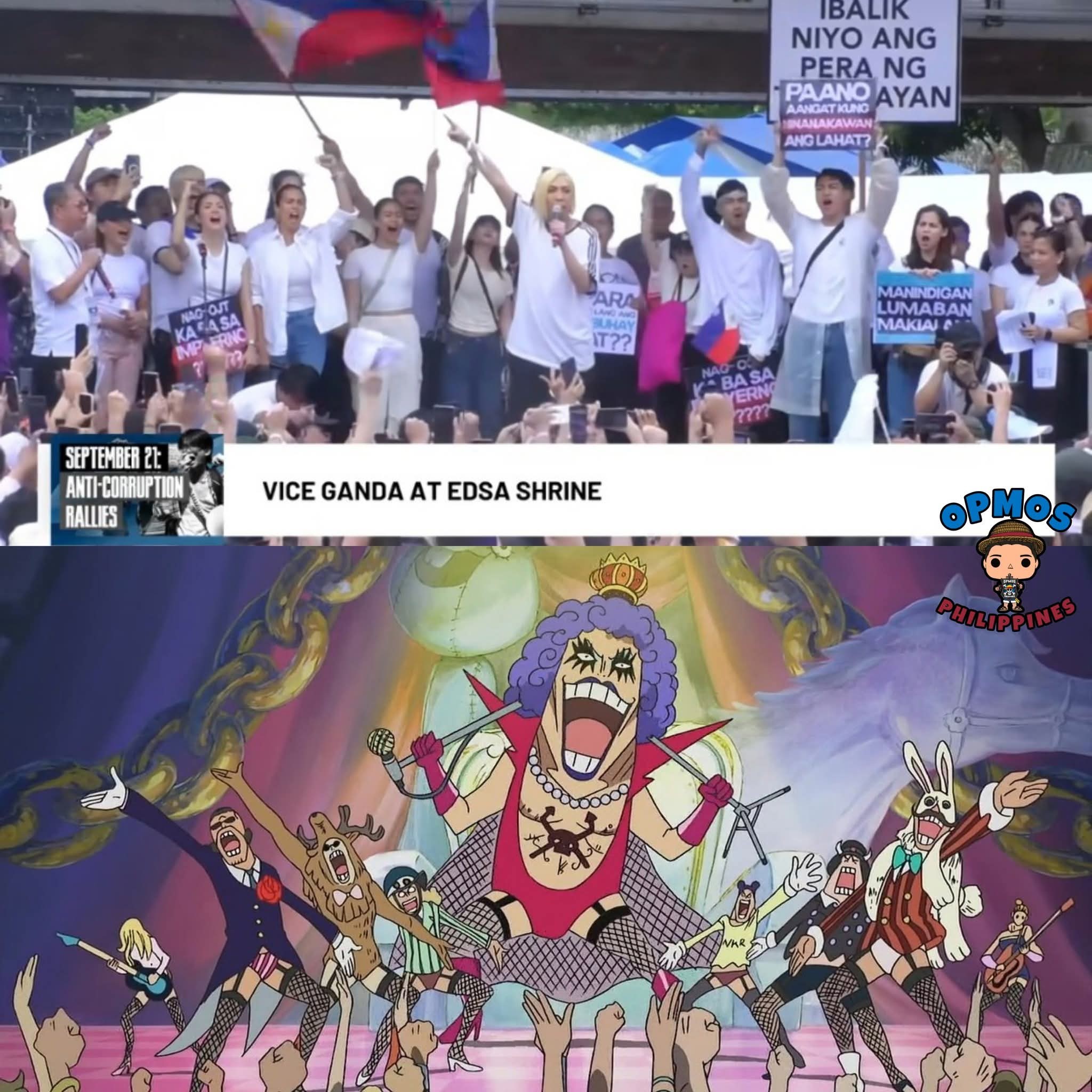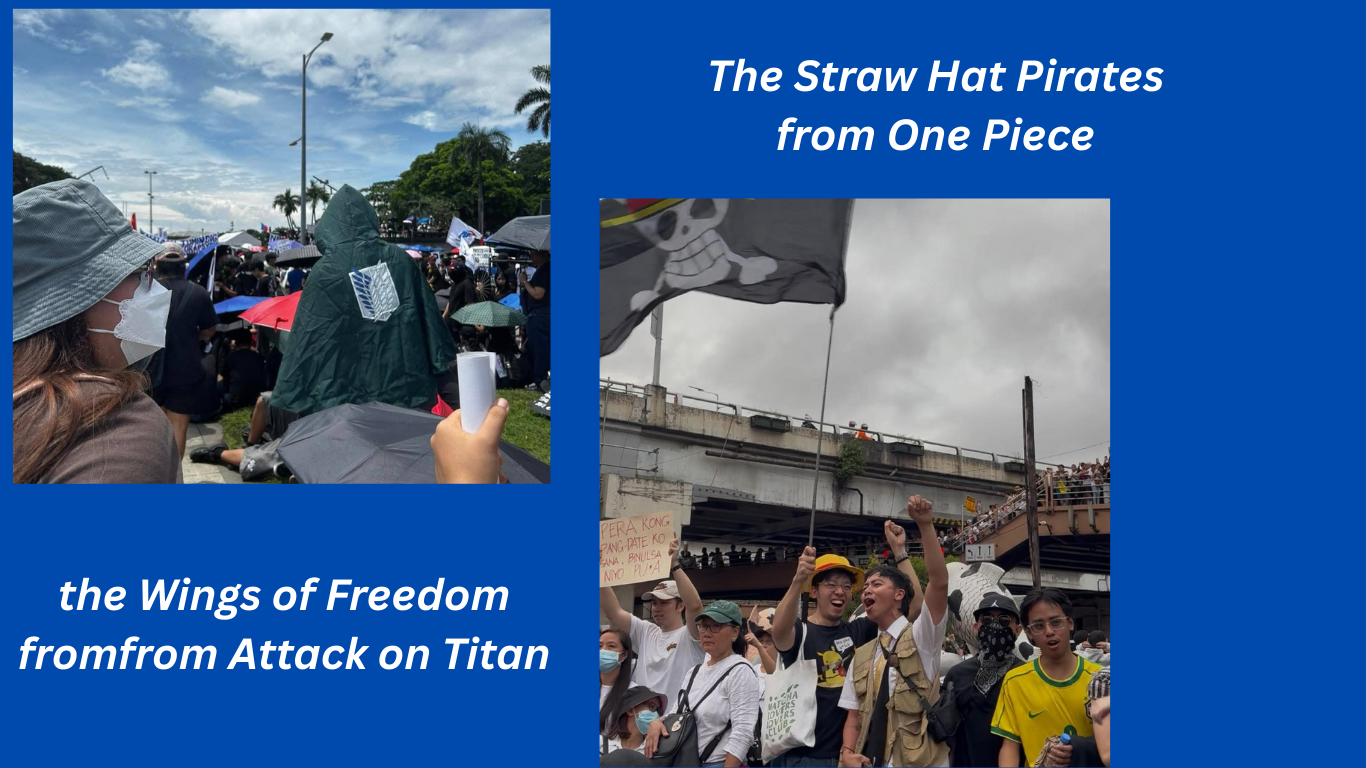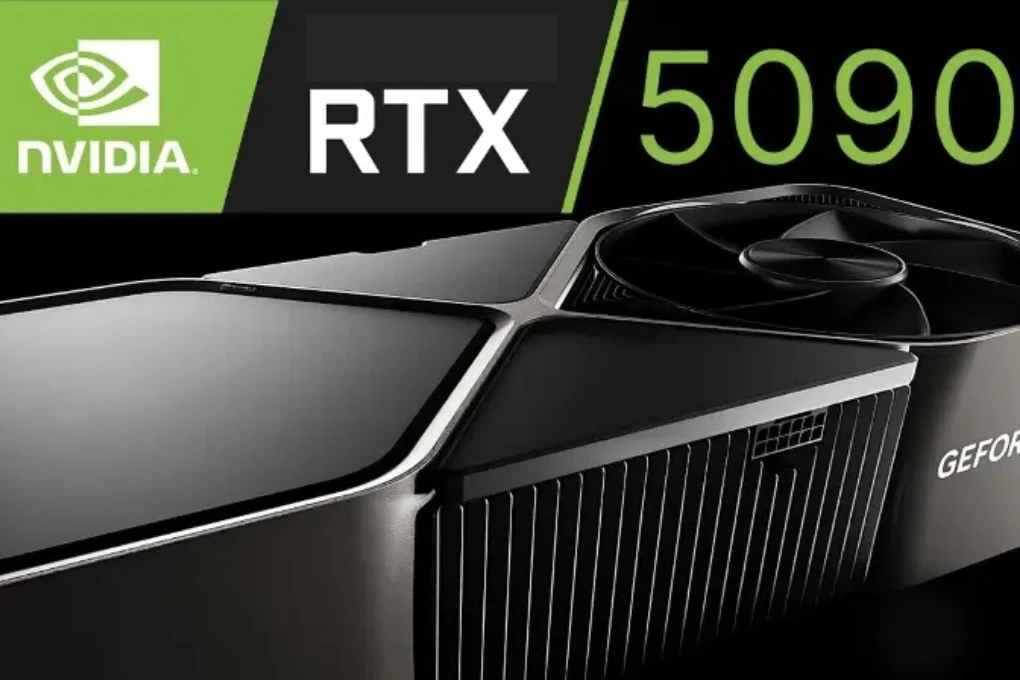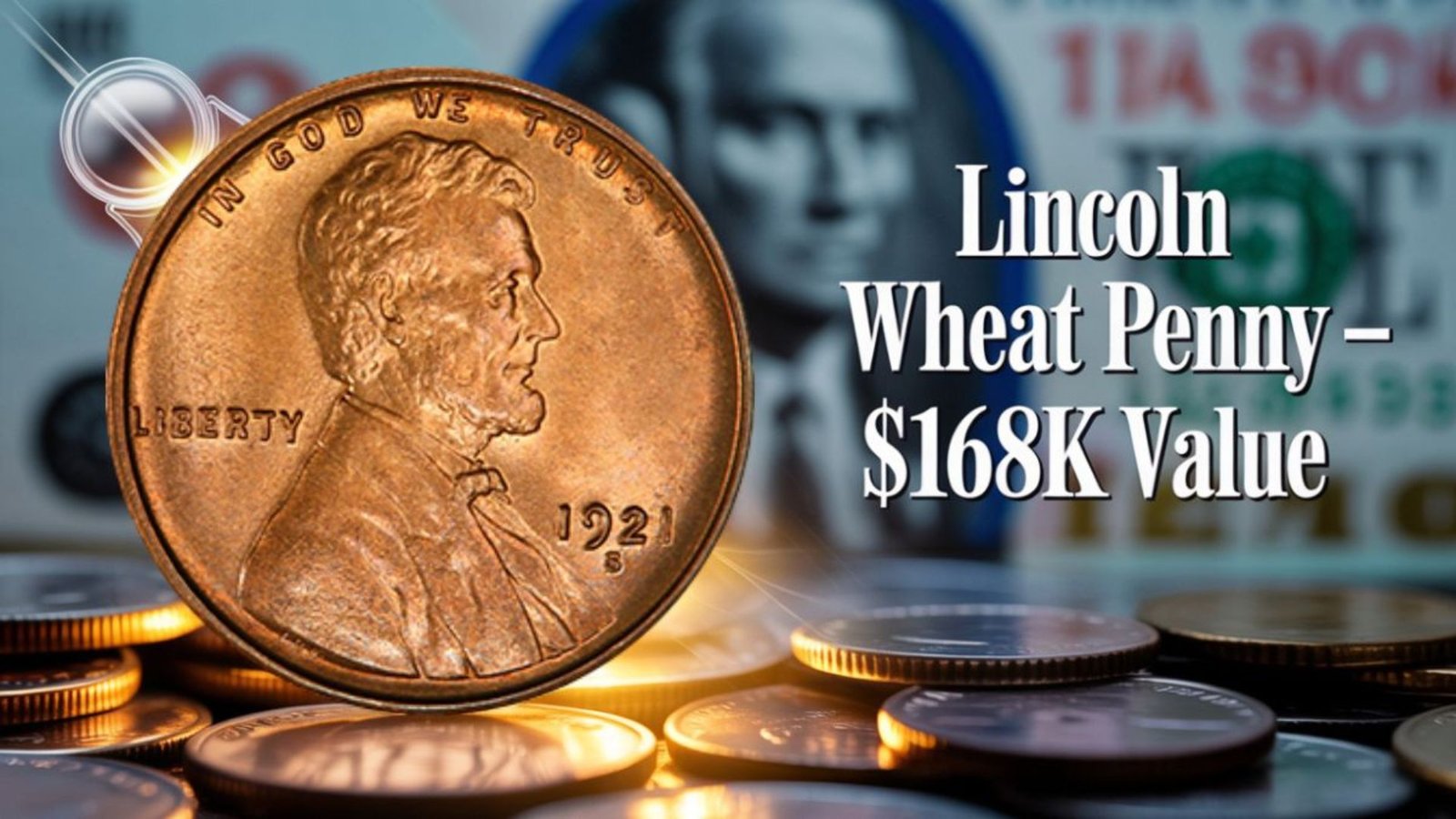Now Reading: Straw Hat flag and A.O.T. Wings of Freedom being raised during a protest against corruption in the Philippines 2025
-
01
Straw Hat flag and A.O.T. Wings of Freedom being raised during a protest against corruption in the Philippines 2025
Straw Hat flag and A.O.T. Wings of Freedom being raised during a protest against corruption in the Philippines 2025

On September 21, 2025, thousands of Filipinos gathered at Luneta Park (Rizal Park) in Manila and other parts of the country in demonstrations dubbed Baha sa Luneta: Aksyon na Laban sa Korapsyon (“Flood at Luneta: Action Against Corruption”). These protests were sparked by mounting allegations of corruption in government flood‐control infrastructure projects, specifically, claims of ghost projects, substandard work, missing funds, and misuse of nearly ₱1.9 trillion (roughly US$33 billion) over recent years.
But beyond the usual placards and banners, some protesters carried more unusual symbols-flags with emblems from popular Japanese manga and anime. Among the most visually striking were:
- The Straw Hat flag PiratesJolly Roger from One Piece,
- The Wings of Freedom emblem from Attack on Titan.

These cultural symbols, borrowed from global popular culture, are being used to express discontent, solidarity, and resistance-and to tap into shared narratives of oppression, revolt, and the fight for justice.
What are these symbols?
Straw Hat Jolly Roger (One Piece)
- The Straw Hat Pirates’ flag is the skull-and-crossbones style pirate flag, but with a straw hat perched on the skull. In One Piece, the story centers on Monkey D. Luffy and his crew (“the Straw Hats”) as they voyage through a world of oppressive powers, corrupt authorities, dangerous governments, and injustice, always seeking freedom, dreams, adventure, and fairness.
- Because of its themes of resisting tyranny and injustice, the Straw Hat flag has in recent years become a symbol in real‐world protests, especially among youth and people who feel disillusioned with government structures. In countries like Indonesia, Nepal, and now the Philippines, protesters have waved it as an emblem of rejecting corruption and authoritarianism.
Wings of Freedom (Attack on Titan)
- In Attack on Titan, the “Wings of Freedom” is an insignia worn by soldiers of the Survey Corps, the military branch that ventures outside the walls to confront monstrous threats, seeking to reclaim freedom and knowledge, often at great cost. The Wings represent striving, sacrifice, and defiance.
- Although I could not find as much specific reporting about the Wings being used in the Baha sa Luneta protests (they may be used by some protesters as part of cosplay or fan culture), such symbols work similarly: they signal alignment with themes of struggle, knowledge against oppression, of stepping outside boundaries, etc.
Context: Why these protests?
To understand why these symbols are resonating, it helps to sketch the broader context.
- The Baha sa Luneta protests were triggered by alleged large‐scale corruption in flood control infrastructure. Projects meant to protect communities from seasonal floods-already a serious issue in the Philippines-were allegedly underdelivered, mismanaged, or overpriced.
- The amount of funds involved, and the perception that many government contractors, politicians, or bureaucrats are implicated, has intensified public anger. Many protesters believe that those in power have failed in their mandate to protect citizens, instead profiting at the expense of the public good.
- The date of the protest-September 21-is also symbolic, marking the anniversary of the declaration of martial law under Ferdinand Marcos Sr. in 1972. Protesters leverage this historical memory to speak about abuses of power, authoritarianism, and need for accountability.
So when people wave flags like the Straw Hat Pirates’ Jolly Roger or Wings of Freedom, they are not just indulging fandom-they are using popular culture to express discontent in a way that feels immediate, relatable, and emotional.
Why pop culture symbols are powerful in protests
1. Universality and emotional resonance
- Many of the protesters are young people, students, people who consume global pop culture: manga, anime, streaming, gaming. Symbols from One Piece or Attack on Titan carry with them stories of struggle, righteousness, fighting against overwhelming odds. These narratives can serve as metaphors for real-world struggles against corruption, systemic injustice, and abuse of power.
- Unlike political logos or slogans that might feel stale or tied to particular political actors, anime symbols can feel fresh, transgressive, and somewhat neutral-yet deeply expressive. They can cross social divides and speak to a sense of collective identity among youth.

2. Symbolic inversion
- A pirate flag (like the Straw Hat flag) traditionally represents lawlessness. But in protest, it can be inverted: it becomes a symbol against authoritarian lawlessness, a signal that the people reject corrupt “laws” or corrupt “government” that ignores justice.
- The Wings of Freedom similarly invert the walls, literally or metaphorically restricting people’s movement, transparency, and access to justice. Survey Corps members breach walls, confront monsters, seek truth outside the safe but imprisoning structures.
3. Visibility, aesthetic appeal, media attention
- Flags are visual, shareable. An unusual flag draws photo attention and social media shares. It becomes a meme. A protest with such symbols can gain more amplification, especially among younger audiences, online.
- The aesthetics of anime are already well integrated into youth culture: cosplay, fan art, and conventions. So to see these symbols in protest may seem natural to many, especially in a culture that consumes anime heavily.
4. Safe subversion
- There’s a sense that using fictive, fantasy symbols is less risky in some sense than directly naming actors, parties, and accusing specific people. It’s a kind of coded dissent. But it still carries strong meaning: everyone knows what is being said-for corruption, for transparency, for accountability.
Specifics: The Straw Hat flag in Baha sa Luneta
According to reports:
- Protesters at the Luneta rally carried the One Piece Straw Hat Pirates’ Jolly Roger.
- The flag has been used before in protests in Indonesia and Nepal for similar reasons: as a symbol of revolt against corruption and in solidarity among youth demanding change
- The presence of the Straw Hat flag was noted by the media as a sign that protest culture is evolving: not just slogans, not just traditional political banners, but borrowed symbols of resistance.
Themes and implications
Legitimacy and de-legitimation
When protesters use symbols like the Straw Hat flag, they are making a statement about legitimacy. They are implying that the current system, or current political obligations, have lost legitimacy: that governments that betray public trust, misuse public funds, or fail to protect citizens are as much part of the problem as the “monsters” in fiction.
Conversely, using these symbols can delegitimize those in power in the eyes of the public. If the symbol becomes widely associated with protest and resistance, its use can shame or pressure authorities.
Generational change
- Many protesters are younger students and young workers. For them, traditional political allegiances may be eroding. Pop culture offers new vocabularies of protest.
- The use of such symbols suggests that younger generations find inspiration not only in political history (martial law, People Power, etc.) but also in global stories of resistance: anime, fantasy, manga stories about standing up.
Risk of co-optation or controversy
- These symbols are fictional, often owned by creators/publishers. Their meaning can be ambiguous or contested. Using them in protest may meet objections from fans who disagree with politicizing them, or from authorities who see them as “disrespectful” or “outside” normal protest decorum.
- Also, there’s a risk of trivializing serious issues by using fictional symbolism. Some may say “it’s just fandom,” but for many protesters, symbolism is serious.
International parallels
- The use of pop culture in protests is not new. The Straw Hat flag has been seen in Indonesia and Nepal, as mentioned. This suggests a regional/global phenomenon where youth harness global media to express localized grievances.
- It reflects how media flows, how fandom and global culture enable people to borrow symbols across borders.
What has been the government/media reaction?
- Media coverage has noted the presence of these flags, often with mild surprise. Many reports mention the Straw Hat flag specifically, sometimes pointing out that the use of such flags is part of a broader trend.
- Authorities so far seem to focus more on crowd size, demands, logistics, than on the symbolism. There has been little official condemnation of the use of anime symbols, although conservative commentators or political rivals might attempt to dismiss the protests by emphasizing their novelty or “youth culture.”
- Some in civil society see these symbols as positive-they engage youth, make protests more inclusive,and help spread awareness. Others caution that symbolism must be matched by concrete demands and accountability.
Risks, challenges, and what’s at stake
- Distraction vs focus: The term “cute protest” or “anime protest” might be used to trivialize serious demands. If too much attention goes to the banners rather than the issues (flood control corruption, accountability, SALNs, etc.), the message might get diluted.
- Symbol fatigue: If multiple symbols are used without coherence, or if symbols are overused without outcomes, their impact may fade.
- Repression and backlash: Authoritarian regimes often target protest aesthetics, icons, and creative expressions. Authorities may clamp down on what they perceive as mockery or challenge to their power, and symbols may be restricted.
- Meaning appropriation: The meaning of the symbol may drift. For some, it may remain a fandom image rather than a political one. For others, it may be co-opted by groups with different agendas.
Possible outcomes & what protesters demand
From what has been reported:
Key demands in Baha sa Luneta include:
- Arrest of individuals implicated in anomalous flood control projects.
- Public release of Statements of Assets, Liabilities, and Net Worth (SALNs) of government officials; lifting bank secrecy in some cases.
- Recovery of alleged ill-gotten wealth, luxury goods & vehicles.
- Stronger anti-corruption measures: granting subpoena and contempt powers to independent investigative bodies.
What symbols like those flags might do to support these demands
- They help mobilize more people, especially younger generations. They create a visual identity for protest movements.
- They help spread messages virally via social media (photos, videos).
- They may force authorities to respond not only to the protest numbers but to the spirit of dissent: corruption is not only about money, but about betrayal of trust, of citizen safety and well‐being.
Reflecting on broader significance
This moment is part of a larger trend in many countries: youth-driven protests using pop culture, social media, creative visuals, meme‐like symbols, borrowed icons, etc., to make political statements. These are not just aesthetic; they represent new ways of organizing, making demands, and holding power to account.
Beyond the Philippines, the fact that the Straw Hat flag has been used in Indonesia and Nepal points to a cross‐border sense of shared grievances against corruption, lack of transparency, environmental degradation, institutional abuses, and also shared tools of expression.
Meanwhile, the use of Attack on Titan iconography (if present) signals deeper metaphors of walls, monsters, freedom, and knowledge, which resonate in societies confronting structural problems.
Conclusion
The raising of the Straw Hat Pirates’ Jolly Roger and the Wings of Freedom at Baha sa Luneta protests is more than an aesthetic flourish. It is a signal: that many Filipinos, particularly younger ones, are using every cultural and symbolic tool available to express outrage, to demand change, and to assert their rights in the face of corruption.
These symbols-and the stories they are drawn from-help frame corruption not just as an administrative or legal issue, but as a moral and ethical one. They revive narratives of resistance, of fighting against odds, of refusing to be oppressed, lied to, or ignored.
As the movement progresses, its success will depend on whether the demands translate into accountability, transparency, and institutional reform. But in the meantime, the flags flying in Luneta serve as a reminder that when people feel betrayed, they often look for stories outside politics to express their dissent, and that sometimes those stories can speak more powerfully than any speech.






















